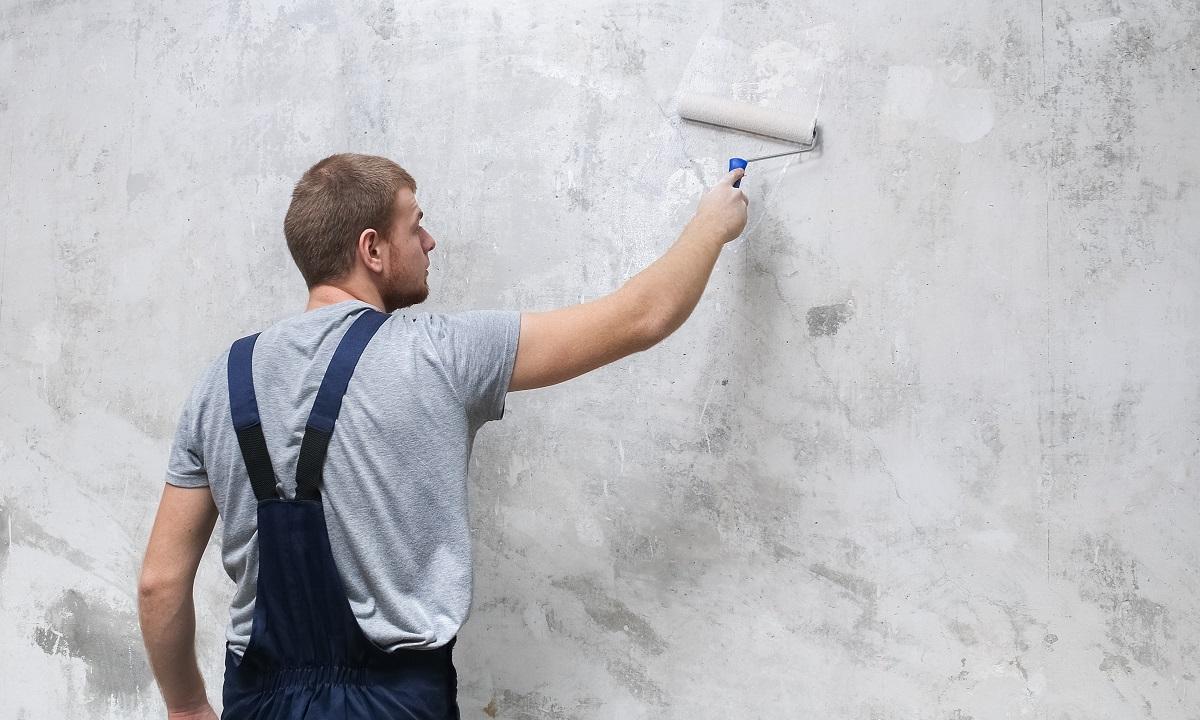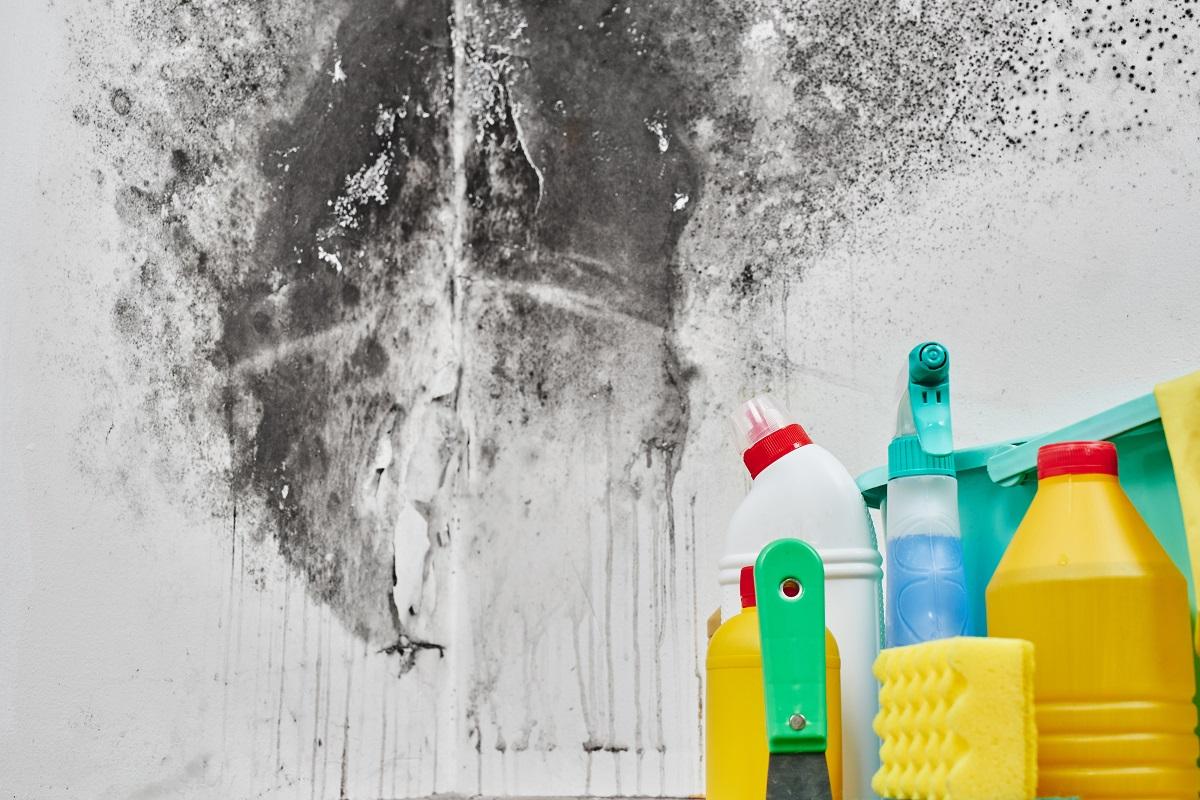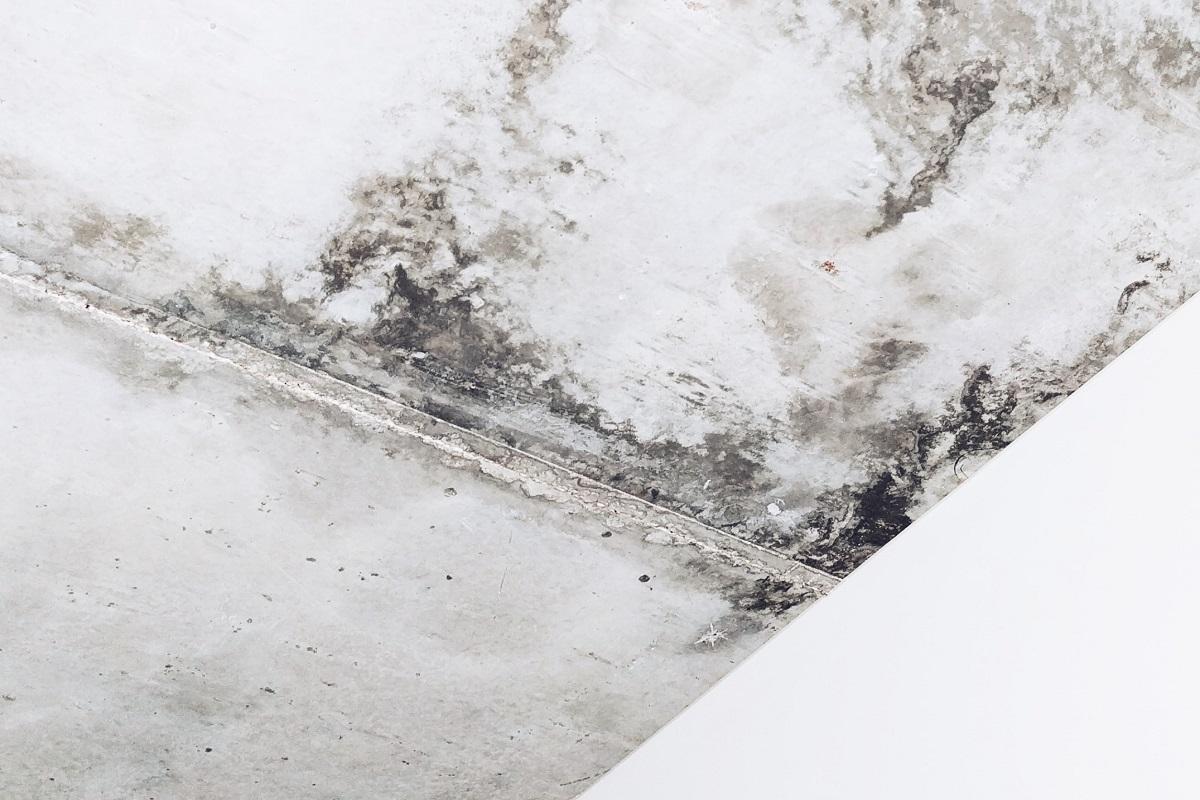So, you're sick of mold and mildew growing on your walls and want to get rid of them as soon as possible?

There are quite a few simple and straightforward methods, such as simply painting, bleaching, or sanding the walls to eliminate them altogether. Yes, you read it right- removing mold is not as tough as it may seem to be.
Molds can deposit on both interior and exterior surfaces, especially in high-humidity areas. And constant exposure to them can cause irritation, allergic reactions like red eyes, sneezing, skin rash, and other issues.
Now, what can you do to get rid of this unwanted allergen? Will painting on it be enough? Will it be a very costly process?
We know loads of questions might be looming in your mind. But just stay calm and keep on reading to know all about effectively eliminating the problem of mold formation.
Painting Over Mold To Kill It

1. Can You Paint Over Mold?
Can paint be applied to mold? Will it kill a mold infestation, or make things even worse? If painting is enough, then which type should be used? And can you do it yourself or is there a need to call upon an expert?
We are here to provide answers to all of your queries. So first things first, yes, painting for killing mold completely can be a viable strategy, provided circumstances are right.
If you fix the underlying cause of mold growth, you can get rid of it permanently. You can apply one or two coats of mold-killing primer over the growing mold and then paint over it.
We’d recommend getting mold-resistant paint instead of a traditional one, as it’s an easy way to get rid of molds without putting extra effort into looking for something else. It can be a cheap and reliable option if you experience frequent mold manifestations in your house. With the availability of several mold-resistant paint options on the market, carefully go over them and select one that suits you best.
But don’t get overwhelmed by the choices you get. We’ll tell you what type to go for in which situations.
2. What Type Of Paint Will Be Viable?
As mentioned, several types of mold-resistant paints are available on the market. Some are based on ammonia formulas, some on beach formulas, and others on mold-eating enzymes.
Many of you might opt for vinegar-based paint, and we won’t discourage you from doing that. Being chemical-free and natural, it is found effective against most types of mold. However, it is not the ultimate solution, as it can be ineffective against some mold varieties and may also leave behind a heavy pungent smell, which can be challenging to get rid of.
That being said, it still works comparatively better than paints based on ammonia formulas, which don’t really work against the majority of molds. Even worse, it provides a suitable environment for them to grow and spread. So, you should definitely avoid them.
On the other hand, bleach-based solutions work in most situations but may not always. Although they may stain the surface, they may also and allow all the mold to keep growing underneath it. So, it becomes imperative to identify the type of mold that is growing on your walls before choosing a compatible paint, and we’d suggest you take advice from a professional painter.
3. Things Needed Before Painting Over Mold
1. Safety First
Many people try sanding over a mold-infested wall to clean it before painting, but this isn't the right thing to do. When you sand an infested surface, the tiny particles spread all around the air, which is not something you’d want. It reaches directly to your lungs, which can be very dangerous and potentially deadly.
If the mold infestation is that bad, we’d strongly suggest calling a professional. This might cost you some extra bucks, but the overall safety makes it worth the investment.
But if you find yourself capable of doing it well, we’d advise taking necessary precautions, like wearing 3M’s full-face respirator and rubber gloves before sanding. It will protect you from inhaling mold particles.
Putting on rubber gloves is always important to avoid contact with toxins that might be present in the paint. They prevent the chemicals from touching the skin, and you might not want to take any chances with your health. You will find quality gloves that can be reused multiple times.
Some may only be meant for single use and should be discarded after a certain number of uses. Also, make sure to discard them properly, away from humans and animals.
Even after sanding, you might find some patches that are difficult to get rid of. In such cases, consider applying a mold sealant prior to painting over the mold. This process, known as encapsulation, is used to seal remaining mold particles, which even sanding couldn’t remove. Once it dries off completely, you can apply one or multiple coats of a mold-killing primer and then coat it with the paint.
Just make sure to avoid any bleach-formulated paint on the surface; it can even make the mold problem worse. Furthermore, always wear quality rubber gloves while working to remove the mold.
2. Wipe The Area
It will always be essential to wipe the area with any clean and wet rags, as it provides an excellent base for paint to settle on. Once wiped and rinsed, dispose of the rag safely, away from animals and people.
3. Let Dry
Once the painted surface has dried off completely, apply one or two coats of the primer (like the Zinsser mold-killing primer), followed by mildew-resistant paint. You can use polyurethane rollers available on the market to apply the primer and paint. Just replace the foam covers, and you can use a single roller to paint your entire house.
Some things need to be taken care of during the process. If you are treating a vast area, make sure to use a sprayer that is ideal to use with your mold-resistant paint (wearing the protection, of course). Make sure you do not use your garden spray bottle, as plastic material isn’t always compatible with such paints.
Important Points To Remember
1. What Happens When You Paint Over Mold?
What specifically happens depends on whether you have a hazardous or non-hazardous mold on your wall. Determine that before you take any action. So, if you’re confused about whether the mold inside the house is toxic or not, call over a mold expert.
If there is no mold or mildew growth on your wall, it will be suitable to paint over areas with moisture problem that resists its spread and formation. And, it is entirely safe to paint over non-toxic cases such that it doesn’t get dangerous for you and your family.
Always make sure to apply single or double coats of primers or a mold sealant prior to applying a layer of paint.
Applying a mold-killing primer or mold sealant eliminates the root cause of the mold problem. It is not the case with the direct application of mold-killing paint. The residing mold continues to damage the house from the inside, and it oozes from the porous surfaces after some time.
Let me explain how? When you’re painting directly over existing mold, it cuts off fresh air circulation, leading to a severe mold issue. In case it is a humid room like a basement, kitchen, bathroom, laundry room, window frames, or other surfaces, the situation is even worse. You wouldn’t want that, obviously.
2. Painting Over An Anti-Mold Paint
Mold-killing paints might not look as glossy as traditional options available on the market, so many might want to have another coat of paint over it. It is highly unrecommended as applying a coat of another paint doesn’t allow mold-resistant paint to work its magic.
Also, before purchasing or applying any paint, make sure to see the product details on its website. These paints are generally applied in a room with a temperature above 50 degrees Fahrenheit. Also, the room needs to be properly ventilated to avoid any future growth of mold.
3. Choosing The Best Mold-Resistant Paint
Color is a primary lookout for anyone who is painting their house. After all, who wants their space to look dull, right? You will find some gorgeous and stellar bathroom paint colors on the online marketplace. Just a reminder, it is viable to have lighter colors in smaller rooms, which inhibits the growth of mildew.
You can remove molds with elbow grease, and a good cleaning solution is easily painted over an appropriate paint. Paints should be applied on high moisture areas and provide a facile growing environment for mold. But as all brands don’t offer similar quality products, you must check the formula used before going for a specific unit.
Again, paint doesn't kill mold entirely but prevents it from further growing. So, after you do the prep, choose the best paints that are affordable and deliver the best solutions. For damp areas like bathrooms and basements, Rust-Oleum is your best bet. The formulation of the paint locks out the moisture completely and deters any mold or mildew growth.
We have seen many of you go for mold-resistant additives and mix them into ordinary paints. It can be a viable solution as long as you mix it properly. In such a case, call over a professional, as they know mixture ratios and the correct application method. Many brands also offer a one-time free consultation about mixing and applying paint correctly.
Lastly, you already know that molds grow faster in an environment with lower pH levels. So, always go for paints free of any organic elements and alkaline and breathable.
What Else Can You Use?
1. Chlorine Bleach
Regular household bleach or sodium hypochlorite works best for destroying mold and removing fungal stains from a wall. However, it can be very harsh when in concentrated form, so you must dilute it before using it.
2. Hydrogen Peroxide
It is less harsh than a bleach solution but kills mold, and lightens stains as effectively. However, it will have a similar bleach effect as chlorine bleach; it works much slower compared to the latter and has no residue or fumes.
3. Distilled White Vinegar
Being acidic, it gradually breaks down the mold structure and kills it. Vinegar is gentle compared to the previous two solutions, but mold spots might pertain and you might need to further scrub it with a household cleaner.
4. Baking Soda And Borax
Baking soda (Sodium Bicarbonate) and borax, having a high pH value, inhibit mold growth and survival. Being inexpensive, it also doesn’t put a dent in your pocket. Additionally, it is non-toxic and mixes easily with water, serving as a quality agent for removing any stains but is not an effective cleaning agent.

Final Words
That’s it from our side. We hope that you have got a bigger picture of how you can paint over mold to kill it.
Once the paint has been applied and dried off properly, there’s nothing much that you can do after that. However, if you are still concerned about future mold problems, a lot of things can be done. Generally speaking, make sure that your room deters mold growth, by keeping it dry and ventilated for an adequate influx of air.
If your room is too susceptible to moisture deposition and new mold growth, you might need extra help from a dehumidifier. It will help keep your space dry and warm. Apart from that, you can constantly monitor the humidity levels of your room.
We hope that our efforts will help you lead a mold-free life. Good luck and take care!
Related Articles
9 Best Paint Primer For Drywall
17 Drywall Alternatives For Your Future Home
10 Best Composite Decking Brands
11 Best Budget Drywall Screw Guns
7 Best Exterior Primer For Peeling Paint
7 Best Primers For Covering Red Paint
7 Best Primers to Cover Dark Paint
7 Best Cold Galvanizing Paints
